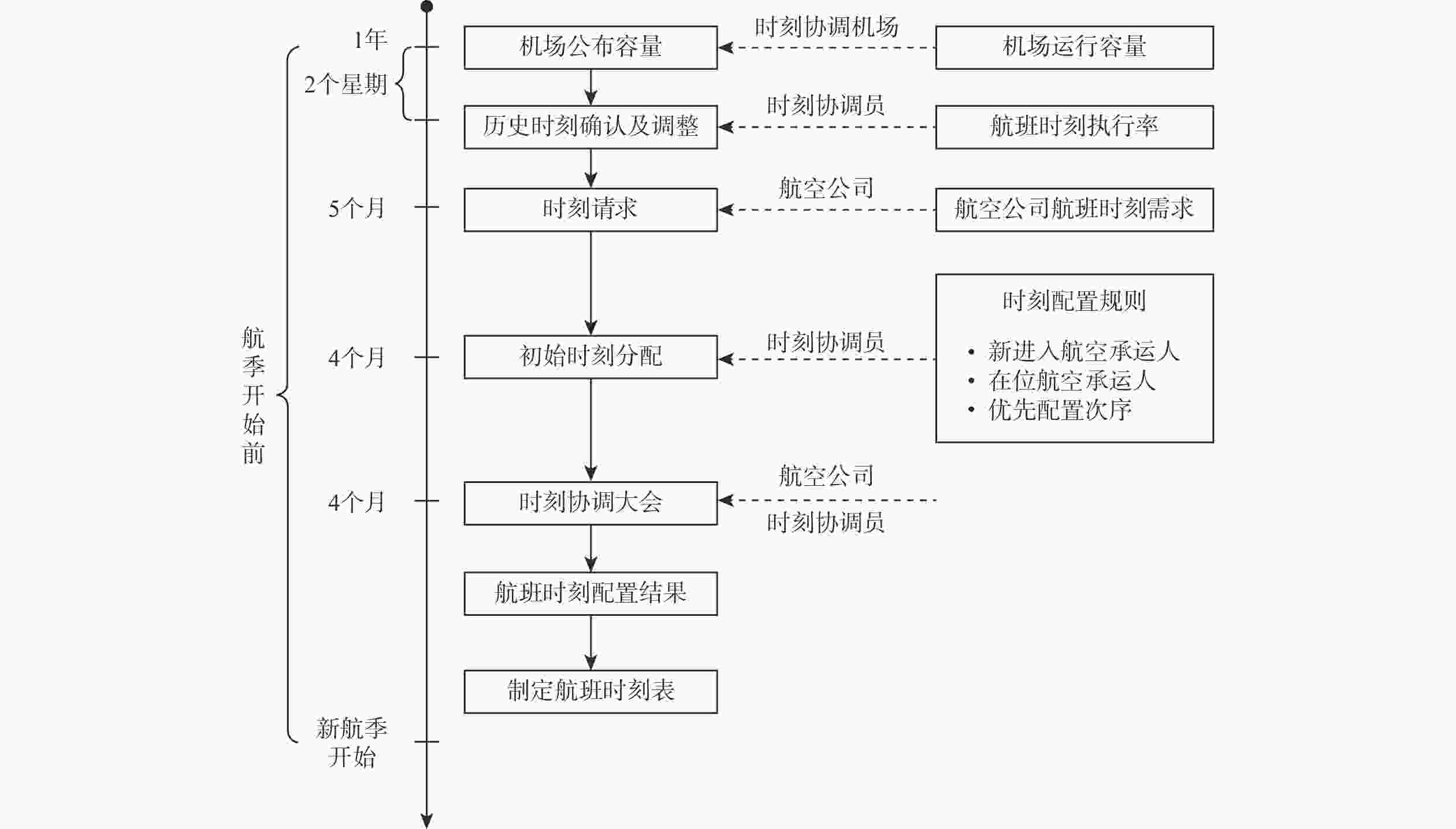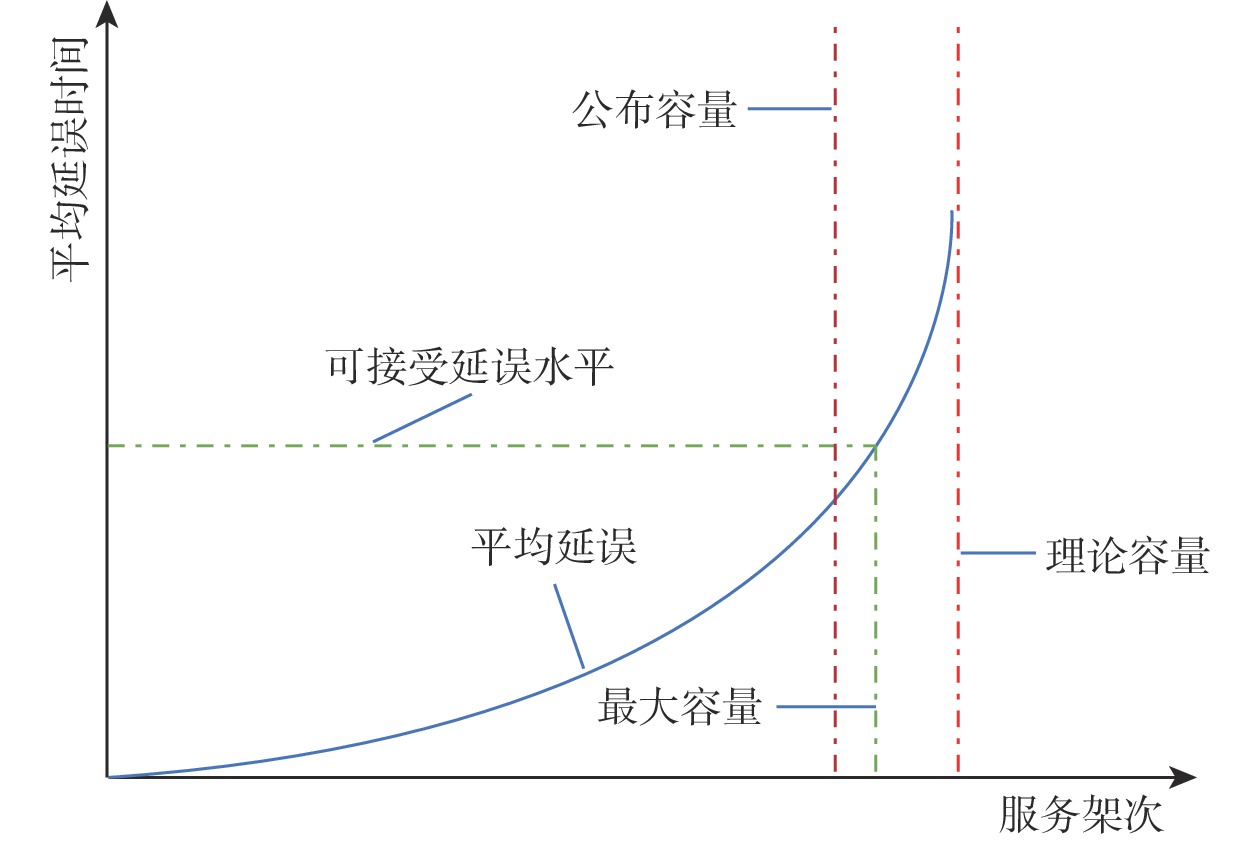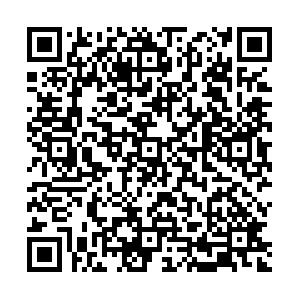-
摘要:
繁忙机场都会面临严重的交通拥堵和航班延误问题。解决该问题的一个有效手段是对机场航班时刻资源进行优化管理。全面介绍了航班时刻资源管理相关的研究进展,系统回顾了机场公布容量设置、机场航班时刻配置的主要方法和手段。从公布容量确定、单机场、机场网络层面和机场群航班时刻配置及航班时刻配置技术复杂性等方面,得出机场航班时刻资源优化配置的关键技术问题。展望了机场航班时刻资源管理的主要方向,并对下一步研究提出建议。
Abstract:Most of the busiest airports airports face severe congestion and flight delays. Optimal allocating airport slots is one of the most effective ways in airport demand management. This paper systematically reviews the progress of research in airport slots allocation, as well as the main techniques in setting airport declared capacity and allocating slots. The major challenging issues of stochastic optimization were identified in such areas as the determination of airport declared capacity, the slot allocation in an airport, in an airport network and in the multi-airport system, and the technical complexity. Main research directions in slot allocation are further discussed and suggested.
-
表 1 航空公司申请机场航班时刻系列
Table 1. An example of series of slot request
航班号 机型 运营日 起飞机场1 起飞时刻1 落地时刻1 目的地机场 开始日期 结束日期 AL123 320 周二、周四、周六 机场1 08:00 10:50 机场2 2020-12-01 2021-02-06 BL223 320 周一至周日 机场1 07:10 09:45 机场3 2020-10-25 2021-03-27 CL001 320 周一、周三、周五、周日 机场1 14:00 19:30 机场4 2020-10-26 2020-11-29 表 2 几种典型的机场容量定义及评估方法
Table 2. Widely used airport capacity and its measuring methods
容量类型 定义 容量的
时间尺度是否考虑
航班延误主要评估方法 应用场景 理论容量 在给定机场构型、运行规则和机队组成情况下,机场在单位时间内能够提供的服务架次 a, h 否 类似历史数据/电子表格/排队论模型/仿真 战略规划 最大/饱和容量 在持续交通服务请求下,每单位时间内能够实现的预期飞行架次 h, 15min 是 排队论模型/仿真 战术运行及运行后分析 实际容量 考虑随机达到航班的排队特征,机场实际运行的容量,通常比最大容量低10%~20% h, 15 min 是 仿真 预战术/战术 持续容量 在连续几个小时内可以实现的小时容量。最大容量的运行通常不能超过1~2 h h 否 仿真 预战术/战术 结构容量 在宏观阶段用于确定机场容量的基线,在长期预测中故意不考虑一些不可靠或可变因素。通常在2~5 a前评估结构容量 a, 季节 否 历史数据/查询表/电子表格/仿真/容量包络线 早期的空中交通流量容量管理 计划容量 原则上在IATA航季开始之前,或至少在实际运行前18个月计算的机场容量 d, h, 15 min 否 查表/电子表格/仿真/容量包络线 用于网络战略阶段和初始时刻分配 运行容量 在运行前一天评估的机场容量,目的是结合最新的运行信息更新机场容量 h, 15 min 否 仿真 网络预战术和战术阶段 公布容量 时刻协调机场在单位时间(通常为1 h或15 min)能够分配给航空承运人的时刻数量 h, 15 min 否 结合运行容量之后综合分析 时刻配置 表 3 机场航班时刻配置相关研究文献
Table 3. Research literature on airport slot allocation
文献 优化目标 约束条件 时刻配置尺度 求解算法/规划模型 文献[3] ①长系列偏移的最小化;②全季节系列偏移的最小化;③最大限度地减少长途航班的偏移;④最小化国际航班偏移;⑤最小化本地飞机时隙请求偏移;⑥最大偏移最小;⑦偏移时隙数量最小座椅偏移最小;⑧最小化协调机场航班偏移 ①时刻唯一性约束;②机场容量约束;③航班周转时间约束 单机场,整个航季 启发式算法、基于$\varepsilon $约束的方法、多准则决策分析、TOPSIS法、PSAM 文献[4] ①总偏移最小化;②最大偏移最小化;③绝对公平的最大偏离(MDA)最小化 ①时刻唯一性约束;②机场容量约束;③航班周转时间约束 单机场,整个航季 TOSAM 启发式算法 文献[28] 总偏移最小 ①以时段和天为单位的机场容量约束;②航班周转时间约束 单机场,整个航季 线性松弛算法 文献[31] 运行效率、时刻分配效率、时刻资源利用、环境影响、公平性 ①机场公布容量约束;②现有航班时刻分配框架下的优先级(如,历史航班时刻持有量);③航空公司和机场的运行要求(例如,周转时间、地面等待、航班连接性);④ATFM空中交通流量管理约束(如,空域扇区的容量);⑤其他用于时刻请求调度的标准。 单机场,整个航季
机场网络,多天/整个航季公布容量建模与战略航班时刻调度模型 文献[32] ①总偏移最小化;②最大航班偏移量最小化 ①时刻的唯一性约束;②机场容量约束;③航班周转时间约束 单机场,整个航季 整数线性规划模型——SAM-II 文献[43] ①总偏移最小化;②总偏移平方的最小化 ①时刻唯一性约束;②机场容量约束;③航班周转时间约束 单机场,整个航季 大邻域搜索技术(LNS);目标可行泵算法(FP) 文献[44] ①总偏移最小化;②最大偏移最小;③偏移时隙数量最小 ①时刻的唯一性约束;②机场容量约束;③航班周转时间约束 单机场,整个航季 2阶段mat启发式算法 文献[45] ①总偏移最小化;②最大偏移量最小 ①时刻唯一性约束;②机场容量约束;③航班飞行时间约束;④航班周转时间约束 单机场,整个航季 大规模邻域搜索/建设性启发式算法和改进启发式算法 文献[46] ①准时性能最大化;②单个航班最大偏移量最小化/时刻表偏移的加权总和最小化③航空公司间的公平性最大化 ①时刻唯一性约束;②航班计划轮挡时间;③航班最大偏移量约束;④航班周转时间约束;⑤15 min航班进场和离场容量约束 单机场,一天 结合随机排队模型和容量综合利用动态规划模型的机场拥堵
模型文献[47] ①航空公司间公平的最大化;②总偏移最小化 ①时刻唯一性约束;②机场容量约束;③航班周转时间约束;④航空公司公平性约束 单机场,整个航季 混合整数规划模型、$\varepsilon $约束法 文献[48] ①总偏移最小化;②最小化与绝对公平的最大偏差;③最小化与平均公平性 (MMR) 的最大偏差;④最小化基尼指数; ①时刻唯一性约束;②机场容量约束;③航班飞行时间约束;④航班周转时间约束 单机场,整个航季 混合整数规划模型、$\varepsilon $约束方法 文献[49] 总偏移最小 ①机场容量限制;②空域扇区容量限制 机场网络,一天 迭代局部搜索算法 文献[50] 总偏移和运行延误加权总和的最小 ①时刻唯一性约束;②机场容量约束;③航班飞行时间约束;④航班周转时间约束 机场网络,整个航季 随机规划,并行算法 文献[51] ①空域用户的总成本最小;②偏移时隙数量最小 ①时刻的唯一性约束;②机场容量约束;③航班对前后航班一致约束;④请求对的
最小、最大间隔时间约束;⑤航班周转时间
约束机场网络, 多天 整数线性规划模型——SOSTA 文献[51] ①总偏移最小化;②最大偏移最小;③被拒绝的时刻总数最小;④被偏置的时刻总数最小 ①时刻唯一性约束;②机场容量约束;③航班飞行时间约束;④航班周转时间约束 单机场,整个航季 启发式算法/基于优先级的多目标舱位分配模型(PSAM) 文献[52] ①总偏移最小化;②绝对公平的最大偏离(MDA)最小化;③偏离航司偏好偏移的偏移量最小化 ①时刻唯一性约束;②机场容量约束;③航班周转时间约束 单机场,整个航季 混合整数规划模型、$\varepsilon $约束方法 文献[53] 总偏移最小化 ①时刻唯一性约束;②机场容量约束;③航班周转时间约束 单机场,整个航季 分支切断方法、整数规划模型 -
[1] 中国民用航空局. 民航航班时刻管理办法: 民航发〔2018〕1号[EB/OL]. (2018-01-05)[2022-04-25]. https://www.caac.gov.cn/XXGK/XXGK/ZFGW/201802/t20180224_49532.html.Civil Aviation Administration of China. Civil aviation flight slot management measures: CAAC 〔2018〕No. 1[EB/OL]. (2018-01-05)[2022-04-25]. https://www.caac.gov.cn/XXGK/XXGK/ZFGW/201802/t20180224_49532.html. [2] UNION E. Council Regulation (EEC) No 95/93 of 18 January 1993 on common rules for the allocation of slots at Community airports [EB/OL]. (1993-01-18)[2022-04-25]. https://www.eumonitor.eu/9353000/1/j9vvik7m1c3gyxp/vhckkmr4ymww. [3] JORGE D, AN-TUNES RIBEIRO N, PAIS ANTUNES A. Towards a decision-support tool for airport slot allocation: Application to Guarulhos (Sao Paulo, Brazil)[J]. Journal of Air Transport Management, 2021, 93: 102048. doi: 10.1016/j.jairtraman.2021.102048 [4] KATSIGIANNIS F A, ZOGRAFOS K G, FAIRBROTHER J. Modelling and solving the airport slot-scheduling problem with multi-objective, multi-level considerations[J]. Transportation Research Part C:Emerging Technologies, 2021, 124: 102914. doi: 10.1016/j.trc.2020.102914 [5] Airports Council International, International Air Transport Association, Worldwide Airport Coordinators Group. Worldwide Airport Slot Guidelines (WASG)[R]. Geneva: IATA, 2020. [6] IATA. Worldwide Slot Guidelines (WSG) [R]. Geneva: IATA, 2011. [7] ODONI A R. A review of certain aspects of the slot allocation process at Level 3 airports under regulation 95/93: ICAT-2020-09 [R]. Cambridge: MIT International Center for Air Transportation, 2020. [8] NEUFVILLE R, ODONI A R, BELOBABA P, et al. Airport systems planning, design, and management [M]. 2nd ed. New York: McGraw Hill, 2013: 89-95. [9] JACQUILLAT A, ODONI A R. A roadmap toward airport demand and capacity management[J]. Transportation Research Part A:Policy and Practice, 2018, 114: 168-185. doi: 10.1016/j.tra.2017.09.027 [10] BALL M, BARNHART C, NEMHAUSER G, et al. Chapter 1 air transportation: Irregular operations and control[M]. Amsterdam: Elsevier, 2007: 1-67. [11] STRAKA P, MARTIN P, VIMARD V, et al. Capacity assessment at Dublin Airport for the purpose of setting slot coordination parameters: P2410D008 [R]. Hampshire: Askhelio: 2017. [12] TAY G, KARPSTEIN R, HORNUNG M. Airport capacity assessment of the air transportation network in selected global regions[C]// Proceedings of the Aviation Technology, Integration, and Operations Conference. Reston: AIAA, 2018: 4234. [13] MORISSET T. Comparing capacities and delays at major European and American airports[D]. Cambridge: Massachusetts Institute of Technology, 2011. [14] TRANSSOLUTIONS, CONSULTING F, RAKAS J, et al. Defining and measuring aircraft delay and airport capacity thresholds[M]. Washington, D. C. : Transportation Research Board, 2014. [15] O’FLYNN, S. Airport capacity assessment metho-dology: 1.1[R]. Brussels: EUROCONTROL, 2016. [16] 胡明华. 空中交通流量管理理论与方法[M]. 北京: 科学出版社, 2010.HU M H. Theory and method of air traffic flow management[M]. Beijing: Science Press, 2010 (in Chinese). [17] RAMAMOORTHY K, HUNTER G. Simulation-based airport capacity estimation[C]// Proceedings of the Aviation Technology, Integration, and Operations Conference. Reston: AIAA, 2013: 4354. [18] DHIR V. Estimation of runway capacity at Changi Airport using AirTOP and Monte Carlo analysis[D]. Singapore: Nanyang Technological University, 2015. [19] BAZARGAN M, FLEMING K, SUBRAMANIAN P. A simulation study to investigate runway capacity using TAAM[C]// Proceedings of the Winter Simulation Conference. Piscataway: IEEE Press, 2003: 1235-1243. [20] SCHINWALD C, PLÖTNER K O, HORNUNG M. Using airport fast-time simulation models to increase the quality of airport capacity utilization studies[C]// Proceedings of the AIAA Modeling and Simulation Technologies Conference. Reston: AIAA, 2016: 421. [21] GILBO E P. Airport capacity: Representation, estimation, optimization[J]. IEEE Transactions on Control Systems Technology, 1993, 1(3): 144-154. doi: 10.1109/87.251882 [22] KICINGER R, CHEN J T, STEINER M, et al. Probabilistic airport capacity prediction incorporating weather forecast uncertainty[C]// Proceedings of the AIAA Guidance, Navigation, and Control Conference. Reston: AIAA, 2014: 1465. [23] GENTRY J, DUFFY K, SWEDISH W J. Airport capacity profiles: F055-L11-014[R]. Washington, D.C.: FAA, 2014. [24] 许辰澄. 基于历史数据的机场系统运行耦合特性研究[D]. 南京: 南京航空航天大学, 2020: 39-67.XU C C. Research on coupling characteristics of airport system operation based on historical data[D]. Nanjing: Nanjing University of Aeronautics and Astronautics, 2020: 39-67(in Chinese). [25] RAILSBACK P, SHERRY L. Survey of rationales and methods for determining declared airport capacity[C]// Transportation Research Board 85th Annual Meeting. Wangshington, D.C.: TRB, 2006: 01029356. [26] STAMATOPOULOS M A, ZOGRAFOS K G, ODONI A R. A decision support system for airport strategic planning[J]. Transportation Research Part C:Emerging Technologies, 2004, 12(2): 91-117. doi: 10.1016/j.trc.2002.10.001 [27] KÖSTERS D. Study on the usage of declared capacity at major German airports: 2007-01-18[R]. Aachen: RWTH Aachen University, 2007. [28] ZOGRAFOS K G, SALOURAS Y, MADAS M A. Dealing with the efficient allocation of scarce resources at congested airports[J]. Transportation Research Part C:Emerging Technologies, 2012, 21(1): 244-256. doi: 10.1016/j.trc.2011.10.008 [29] SWAROOP P, ZOU B, BALL M O, et al. Do more US airports need slot controls? A welfare based approach to determine slot levels[J]. Transportation Research Part B:Methodological, 2012, 46(9): 1239-1259. doi: 10.1016/j.trb.2012.03.002 [30] BARNHART C, FEARING D, ODONI A, et al. Demand and capacity management in air transportation[J]. EURO Journal on Transportation and Logistics, 2012, 1(1-2): 135-155. doi: 10.1007/s13676-012-0006-9 [31] ZOGRAFOS K G, MADAS M A, ANDROUTSOPOULOS K N. Increasing airport capacity utilisation through optimum slot scheduling: Review of current developments and identification of future needs[J]. Journal of Scheduling, 2017, 20(1): 3-24. doi: 10.1007/s10951-016-0496-7 [32] ZOGRAFOS K G, ANDROUTSOPOULOS K N, MADAS M A. Minding the gap: Optimizing airport schedule displacement and acceptability[J]. Transportation Research Part A:Policy and Practice, 2018, 114: 203-221. doi: 10.1016/j.tra.2017.09.025 [33] BALL M O, BERARDINO F, HANSEN M. The use of auctions for allocating airport access rights[J]. Transportation Research Part A:Policy and Practice, 2018, 114: 186-202. doi: 10.1016/j.tra.2017.09.026 [34] 丁蓉蓉. 航班时刻资源拍卖与协同分配问题研究[D]. 南京: 南京航空航天大学, 2018: 37-112.DING R R. Research on auction and co-allocation of flight slot resource[D]. Nanjing: Nanjing University of Aeronautics and Astronautics, 2018: 37-112(in Chinese). [35] CASTELLI L, PELLEGRINI P, PESENTI R. Airport slot allocation in Europe: Economic efficiency and fairness[J]. International Journal of Revenue Management, 2012, 6(1/2): 28. doi: 10.1504/IJRM.2012.044514 [36] BERTSIMAS D, LULLI G, ODONI A. An integer optimization approach to large-scale air traffic flow management[J]. Operations Research, 2011, 59(1): 211-227. doi: 10.1287/opre.1100.0899 [37] SHENG D, LI Z C, FU X W. Modeling the effects of airline slot hoarding behavior under the grandfather rights with use-it-or-lose-it rule[J]. Transportation Research Part E:Logistics and Transportation Review, 2019, 122: 48-61. doi: 10.1016/j.tre.2018.11.006 [38] MIRANDA V A P, OLIVEIRA A V M. Airport slots and the internalization of congestion by airlines: An empirical model of integrated flight disruption management in Brazil[J]. Transportation Research Part A:Policy and Practice, 2018, 116: 201-219. doi: 10.1016/j.tra.2018.06.008 [39] AVENALI A, D’ALFONSO T, LEPORELLI C, et al. An incentive pricing mechanism for efficient airport slot allocation in Europe[J]. Journal of Air Transport Management, 2015, 42: 27-36. doi: 10.1016/j.jairtraman.2014.07.009 [40] FUKUI H. An empirical analysis of airport slot trading in the United States[J]. Transportation Research Part B:Methodological, 2010, 44(3): 330-357. doi: 10.1016/j.trb.2009.07.001 [41] BASSO L J, ZHANG A M. Pricing vs. slot policies when airport profits matter[J]. Transportation Research Part B:Methodological, 2010, 44(3): 381-391. doi: 10.1016/j.trb.2009.09.005 [42] VERHOEF E T. Congestion pricing, slot sales and slot trading in aviation[J]. Transportation Research Part B:Methodological, 2010, 44(3): 320-329. doi: 10.1016/j.trb.2009.07.002 [43] ANDROUTSOPOULOS K N, MANOUSAKIS E G, MADAS M A. Modeling and solving a bi-objective airport slot scheduling problem[J]. European Journal of Operational Research, 2020, 284(1): 135-151. doi: 10.1016/j.ejor.2019.12.008 [44] RIBEIRO N A, JACQUILLAT A, ANTUNES A P, et al. An optimization approach for airport slot allocation under IATA guidelines[J]. Transportation Research Part B:Methodological, 2018, 112: 132-156. doi: 10.1016/j.trb.2018.04.005 [45] RIBEIRO N A, JACQUILLAT A, ANTUNES A P. A large-scale neighborhood search approach to airport slot allocation[J]. Transportation Science, 2019, 53(6): 1772-1797. doi: 10.1287/trsc.2019.0922 [46] RIBEIRO N A, JACQUILLAT A, ANTUNES A P, et al. Improving slot allocation at Level 3 airports[J]. Transportation Research Part A:Policy and Practice, 2019, 127: 32-54. doi: 10.1016/j.tra.2019.06.014 [47] ZOGRAFOS K G, JIANG Y. A Bi-objective efficiency-fairness model for scheduling slots at congested airports[J]. Transportation Research Part C:Emerging Technologies, 2019, 102: 336-350. doi: 10.1016/j.trc.2019.01.023 [48] JIANG Y, ZOGRAFOS K G. A decision making framework for incorporating fairness in allocating slots at capacity-constrained airports[J]. Transportation Research Part C:Emerging Technologies, 2021, 126: 103039. doi: 10.1016/j.trc.2021.103039 [49] PELLEGRINI P, CASTELLI L, PESENTI R. Secondary trading of airport slots as a combinatorial exchange[J]. Transportation Research Part E:Logistics and Transportation Review, 2012, 48(5): 1009-1022. doi: 10.1016/j.tre.2012.03.004 [50] COROLLI L, LULLI G, NTAIMO L. The time slot allocation problem under uncertain capacity[J]. Transportation Research Part C:Emerging Technologies, 2014, 46: 16-29. doi: 10.1016/j.trc.2014.05.004 [51] PELLEGRINI P, BOLIĆ T, CASTELLI L, et al. SOSTA: An effective model for the Simultaneous Optimisation of Airport SloT Allocation[J]. Transportation Research Part E:Logistics and Transportation Review, 2017, 99: 34-53. doi: 10.1016/j.tre.2016.12.006 [52] FAIRBROTHER J, ZOGRAFOS KG, GLAZEBROOK KD. A slot-scheduling mechanism at congested airports that incorporates efficiency, fairness, and airline preferences[J]. Transportation Science, 2019, 54(1): 115-138. [53] FAIRBROTHER J, ZOGRAFOS KG. Optimal scheduling of slots with season segmentation[J]. European Journal of Operationtal Research, 2021, 291(3): 961-982. doi: 10.1016/j.ejor.2020.10.003 [54] BRUCKER P, DREXL A, MÖHRING R, et al. Resource-constrained project scheduling: Notation, classification, models, and methods[J]. European Journal of Operational Research, 1999, 112(1): 3-41. doi: 10.1016/S0377-2217(98)00204-5 [55] PRITSKER A, WAITERS LJ, WOLFE PM. Multiproject scheduling with limited resources: A zero-one programming approach[J]. Management Science, 1969, 16(1): 93-108. doi: 10.1287/mnsc.16.1.93 [56] BENLIC U. Heuristic search for allocation of slots at network level[J]. Transportation Research Part C:Emerging Technologies, 2018, 86: 488-509. doi: 10.1016/j.trc.2017.03.015 [57] HANSEN M, WEIDNER T. Multiple airport systems in the United States: Current status and future prospects[J]. Transportation Research Record Journal of the Transportation Research Board, 1995: 8-17. [58] BONNEFOY P A, HANSMAN R J. Emergence of secondary airports and dynamics of regional airport systems in the United States[J]. Massachusetts Institute of Technology, 2006. [59] 傅志寰, 陆化普. 城市群交通一体化: 理论研究与案例分析[M]. 北京: 人民交通出版社, 2016.FU Z H, LU H P. Urban agglomeration transportation integration: Theory and case study[M]. Beijing: China Communications Press, 2016 (in Chinese). [60] AYYALASOMAYAJULA S, DELAURENTIS D. Developing strategies for improved management of airport metroplex resources[C]// Proceedings of the 9th AIAA Aviation Technology, Integration, and Operations Conference. Reston: AIAA, 2009: 7036. [61] REN L L, CLARKE J P, SCHLEICHER D, et al. Contrast and comparison of metroplex operations: An air traffic management study of Atlanta, los angeles, New York, and Miami[C]// Proceedings of the 9th AIAA Aviation Technology, Integration, and Operations Conference. Reston: AIAA, 2009: 7134. [62] TIMAR S, SCHLEICHER D, SARAF A, et al. Metroplex demand analysis and applications[C]// Proceedings of the AIAA Modeling and Simulation Technologies Conference. Reston: AIAA, 2010: 7611. [63] CAPOZZI B, ATKINS S, CHOI S. Towards optimal routing and scheduling of metroplex operations[C]// Proceedings of the 9th AIAA Aviation Technology, Integration, and Operations Conference. Reston: AIAA, 2009: 7037. [64] DONALDSON A, HANSMAN R J. Capacity improvement potential for the New York metroplex system[C]// Proceedings of the 10th AIAA Aviation Technology, Integration, and Operations (ATIO) Conference. Reston: AIAA, 2010: 9285. [65] VINAY V, AYYALASOMAYAJULA S, DELAURENTIS D. A metroplex capacity enhancement strategy through coordinated use of runway dependencies[C]// Proceedings of the 11th AIAA Aviation Technology, Integration, and Operations (ATIO) Conference. Reston: AIAA, 2011: 7067. [66] CAPOZZI B, ATKINS S. A hybrid optimization approach to air traffic management for metroplex operations[C]// Proceedings of the 10th AIAA Aviation Technology, Integration, and Operations Conference. Reston: AIAA, 2010: 9062. [67] AMARO CARMONA M A, SAEZ NIETO F, VERDONK GALLEGO C E. A data-driven methodology for characterization of a terminal manoeuvring area in multi-airport systems[J]. Transportation Research Part C:Emerging Technologies, 2020, 111: 185-209. doi: 10.1016/j.trc.2019.12.011 [68] SCHLEICHER D, CLARKE J P, SARAF A, et al. A concept of operations for a NextGen metroplex scheduling concept[C]// Proceedings of the 11th AIAA Aviation Technology, Integration, and Operations Conference. Reston: AIAA, 2011: 7065. [69] MARZUOLI A C, FERON E, HANSEN M, et al. Multimodality in a metroplex environment: A case study in the San Francisco Bay Area[C]// Proceedings of the AIAA Infotech @ Aerospace. Reston: AIAA, 2015: 1571. [70] CLARKE J P, REN L L, MCCLAIN E, et al. Evaluating concepts for metroplex operations[C]// Proceedings of the 10th AIAA Aviation Technology, Integration, and Operations Conference. Reston: AIAA, 2010: 9249. [71] WIELAND F, TYAGI A, KUMAR V, et al. METROSIM: A metroplex-wide route planning and airport scheduling tool[C]// Proceedings of the 14th AIAA Aviation Technology, Integration, and Operations Conference. Reston: AIAA, 2014: 2162. [72] MURÇA M C R, HANSMAN R J. Identification, characterization, and prediction of traffic flow patterns in multi-airport systems[J]. IEEE Transactions on Intelligent Transportation Systems, 2019, 20(5): 1683-1696. doi: 10.1109/TITS.2018.2833452 [73] SIDIROPOULOS S, MAJUMDAR A, HAN K, et al. Identifying significant traffic flow patterns in Multi-Airport Systems Terminal Manoeuvring Areas under uncertainty[C]// Proceedings of the 16th AIAA Aviation Technology, Integration, and Operations Conference. Reston: AIAA, 2016: 3162. [74] ZHANG Y, TANG H L, KNORR D, et al. Measuring the benefits of NextGen metroplex in convective weather: case study of north texas metroplex[C]// Proceedings of the Aviation Technology, Integration, and Operations Conference. Reston: AIAA, 2018: 4235. [75] MURÇA M C R, HANSMAN R J, LI L S, et al. Flight trajectory data analytics for characterization of air traffic flows: A comparative analysis of terminal area operations between New York, Hong Kong and Sao Paulo[J]. Transportation Research Part C:Emerging Technologies, 2018, 97: 324-347. doi: 10.1016/j.trc.2018.10.021 [76] CHEVALLEY E, PARKE B, KRAUT J, et al. Scheduling and delivering aircraft to departure fixes in the NY metroplex with controller-managed spacing tools[C]// Proceedings of the 15th AIAA Aviation Technology, Integration, and Operations Conference. Reston: AIAA, 2015: 2428. [77] IDRIS H R, SHEN N, SARAF A P, et al. Queue buffer sizing for efficient and robust integrated departure scheduling[C]// Proceedings of the 16th AIAA Aviation Technology, Integration, and Operations Conference. Reston: AIAA, 2016: 3901. [78] IDRIS H. Queuing analysis of interdependencies between multi-airport system operations[C]// Proceedings of the 9th AIAA Aviation Technology, Integration, and Operations Conference. Reston: AIAA, 2009: 7039. [79] XUE M, ZELINSKI S, MULFINGER D G. Uncertainty analysis of integrated departures and arrivals: A los angeles case study[C]// Proceedings of the Aviation Technology, Integration, and Operations Conference. Reston: AIAA, 2013: 4347. [80] XUE M, ZELINSKI S. Optimization of integrated departures and arrivals under uncertainty[C]// Proceedings of the Aviation Technology, Integration, and Operations Conference. Reston: AIAA, 2013: 4322. [81] YOO H S, EVANS A D, KULKARNI D, et al. Benefit assessment of the integrated demand management concept for multiple New York metroplex airports[C]// Proceedings of the AIAA Scitech 2020 Forum. Reston: AIAA, 2020: 1400. [82] WANG Y J, HU M H, SUI D, et al. Departure scheduling in a multi-airport system[C]//Proceedings of the 8th USA/Europe Air Traffic Management Research and Development Seminar. California: ATM, 2009. [83] 彭瑛. 多机场群运行评估与优化研究[D]. 南京: 南京航空航天大学, 2014: 36-90.PENG Y. Evaluation and optimazation of metroplex operation[D]. Nanjing: Nanjing University of Aeronautics and Astronautics, 2014: 36-90(in Chinese). -







 下载:
下载:





